What is Self-Image in Psychology? How Do We Improve it?
 Self-image is yet another of the “self” concepts essential to understand in positive psychology.
Self-image is yet another of the “self” concepts essential to understand in positive psychology.
Although related to the others, it is a distinct concept that has its own place and its own importance.
If you’re not sure what self-image is, you’ve come to the right place! Read on to learn more about what it is, how it differs from other self-concepts like self-esteem, why it is so important in human psychology, and what we can do when it’s negative or unhealthy.
Before you read on, we thought you might like to download our three Self-Compassion Exercises for free. These detailed, science-based exercises will not only help you show more compassion and kindness to yourself but will also give you the tools to help your clients, students or employees increase the compassion they show themselves.
This Article Contains:
- What is the Meaning of Self-Image?
- The Psychology of Self-Image Theory
- The Importance of a Positive Self-Image
- The Problems That Occur When Obsessed with Self-Image
- How to Address and Change Self-Image Issues: 8 Exercises to Increase Self-Image
- How to Help Build a Positive Self-Image in Child Development
- How to Help Build a Positive Self-Image in Adolescents
- The Self-Image Profile + Scale
- Self-Image Therapy
- Helpful Meditations
- Recommended YouTube Videos
- Recommended Books
- 9 Quotes and Affirmations
- A Take-Home Message
- References
What is the Meaning of Self-Image?
As you might imagine, self-image is related to what you see when you look in a mirror—however, it goes much deeper than that. Self-image refers to how we see ourselves on a more global level, both internally and externally.
Random House Dictionary defines self-image as “the idea, conception, or mental image one has of oneself.”
The Mountain State Centers for Independent Living explains further:
“Self-image is how you perceive yourself. It is a number of self-impressions that have built up over time… These self-images can be very positive, giving a person confidence in their thoughts and actions, or negative, making a person doubtful of their capabilities and ideas.”
What you see when you look in the mirror and how you picture yourself in your head is your self-image.
As one of many “self” concepts, it’s closely related to a few others.
Self-Image vs. Self-Concept
Self-image and self-concept are strongly associated, but they’re not quite the same thing.
Self-concept is a more overarching construct than self-image; it involves how you see yourself, how you think about yourself, and how you feel about yourself. In a sense, self-image is one of the components that make up self-concept (McLeod, 2008).
Self-Image vs. Self-Esteem
Similarly, self-image has a lot to do with self-esteem. After all, how we see ourselves is a big contributing factor to how we feel about ourselves.
However, self-esteem goes deeper than self-image. Self-esteem is the overall sense of respect for ourselves and involves how favorably (or unfavorably) we feel about ourselves.
Having a negative self-image can certainly influence self-esteem, and having low self-esteem is likely to be accompanied by a negative self-image, but they are at least somewhat independent “self” aspects.
How Identity is Related
Identity is also a closely related concept but is also a larger and more comprehensive one than self-image. Identity is our overall idea of who we are. As self-concept and self-esteem expert Roy Baumeister puts it:
“The term ‘identity’ refers to the definitions that are created for and superimposed on the self”
(1997, p. 681).
In other words, identity is the whole picture of who we believe we are—and who we tell ourselves and others that we are—while self-image is one piece of that picture.
The Psychology of Self-Image Theory

His 1965 book Society and the Adolescent Self-Image was one of the first in-depth explorations of the concept, and it also provided one of the most-cited psychology scales ever: the Rosenberg Self-Esteem Scale.
The book itself has been cited in peer-reviewed publications over 35,000 times (as of December 2nd, 2018).
Since then, interest has remained steady in “self” constructs, but most of the attention has been aimed at self-image’s cousins: self-esteem, self-concept, self-worth, self-efficacy, self-confidence, etc. As such, there isn’t really one unifying theory of self-image.
However, we do know that self-image is based on our perceptions of reality, that it is built over a lifetime and continues to change as we do, and that it’s something we have some influence over.
The Elements and Dimensions of Self-Image
Although there is no widely agreed-upon framework for the aspects of self-image, there are some proposed types and dimensions. These come from Suzaan Oltmann, an independent distributor at one of South Africa’s FET Colleges.
The three elements of a person’s self-image are:
- The way a person perceives or thinks of him/herself.
- The way a person interprets others’ perceptions (or what he thinks others think) of him/herself.
- The way a person would like to be (his ideal self).
The six dimensions of a person’s self-image are:
- Physical dimension: how a person evaluates his or her appearance
- Psychological dimension: how a person evaluates his or her personality
- Intellectual dimension: how a person evaluates his or her intelligence
- Skills dimension: how a person evaluates his or her social and technical skills
- Moral dimension: how a person evaluates his or her values and principles
- Sexual dimension: how a person feels he or she fits into society’s masculine/feminine norms (Oltmann, 2014)
These elements and dimensions offer a framework through which to view self-image, but remember that this is not a known and widely accepted framework; rather, it is one possible way of thinking about self-image.
10 Examples of Positive and Negative Self-Image
It’s pretty easy to distinguish between positive and negative self-image.
A positive self-image is having a good view of yourself; for example:
- Seeing yourself as an attractive and desirable person.
- Having an image of yourself as a smart and intelligent person.
- Seeing a happy, healthy person when you look in the mirror.
- Believing that you are at least somewhat close to your ideal version of yourself.
- Thinking that others perceive you as all of the above as well as yourself.
On the other hand, negative self-image is the flipside of the above; it looks like:
- Seeing yourself as unattractive and undesirable.
- Having an image of yourself as a stupid or unintelligent person.
- Seeing an unhappy, unhealthy person when you look in the mirror.
- Believing that you are nowhere near your ideal version of yourself.
- Thinking that others perceive you as all of the above as well as yourself.
The Importance of a Positive Self-Image
Having a self-image that is distorted or simply untrue, is harmful. Let’s discuss the importance of having an accurate and positive reflection of oneself.
Distorted Self-Image and Self-Image Disorder
Having a distorted self-image means that you have a view of yourself that is not based in reality. We all have slight variations and detachments from reality—maybe we think we’re a bit thinner or heavier than we really are, for example—but when your self-image is greatly detached from reality, it can cause serious emotional and psychological problems.
In fact, there is a disorder that centers on this distortion; it’s called Body Dysmorphic Disorder (BDD). Here’s a description of BDD from the Anxiety and Depression Association of America:
“BDD is a body-image disorder characterized by persistent and intrusive preoccupations with an imagined or slight defect in one’s appearance.”
We all have things we don’t love about ourselves or things we wish we could change, and we might even occasionally exaggerate our flaws, but people with BDD are stuck in a much more negative and dramatic state of mind when it comes to their perceived flaw(s).
The ADAA goes on to say: “People with BDD can dislike any part of their body, although they often find fault with their hair, skin, nose, chest, or stomach. In reality, a perceived defect may be only a slight imperfection or nonexistent.”
Some of the coping behaviors that point to a diagnosis of BDD include:
- Camouflaging (with body position, clothing, makeup, hair, hats, etc.)
- Comparing body part to others’ appearance
- Seeking surgery
- Checking in a mirror
- Avoiding mirrors
- Skin picking
- Excessive grooming
- Excessive exercise
- Changing clothes excessively (ADAA, n.d.)
Unstable Self-Image (+ Symptoms)
If the problem is more of an unstable self-image than an excessively negative and narrowly focused one, similar to BDD, the individual may be suffering from a different issue: Borderline Personality Disorder (BPD).
People with BPD often experience a profound lack of self-image and self-concept. They may feel like they don’t know who they are, and their perception of their own identity may vary widely over time. They might even have trouble seeing their past self, present self, and future self as the same person.
This is known as identity disturbance: a “markedly and persistently unstable self-image or sense of self” (Salters-Pedneault, 2018). It involves your personality, thoughts and feelings, and demeanor changing according to the context. Everyone does this to some extent, but people with BPD often find themselves exhibiting major shifts in identity.
It’s easy to see how these issues lead to instability in self-image; if we’re not at least mostly the same all the time, then who are we?
The symptoms that are associated with an unstable self-image and BPD in general include:
- Having an unstable or dysfunctional self-image or a distorted sense of self (how one feels about one’s self)
- Difficulty feeling empathy for others
- Feelings of isolation, boredom, and emptiness
- A persistent fear of abandonment and rejection, including extreme emotional reactions to real and even perceived abandonment
- History of unstable relationships that can change drastically from intense love and idealization to intense hate
- Intense, highly changeable moods that can last for several days or for just a few hours
- Strong feelings of anxiety, worry, and depression
- Impulsive, risky, self-destructive and dangerous behaviors, including reckless driving, drug or alcohol abuse, and having unsafe sex
- Hostility
- Unstable career plans, goals, and aspirations (Cagliostro, 2018).
Low Self-Image and Depression
As you might expect, low self-image can also be a driving factor and/or a product of depression. When we feel bad about ourselves, it’s natural that our perception of ourselves can suffer. Similarly, when our self-image takes a hit, it follows that we start to feel pretty bad about ourselves and our lives.
An effective depression treatment will likely include some work on building and maintaining a better self-image and, since they’re so closely related, that better self-image can also reinforce the treatment and help you feel happier and healthier.
9 Interesting Statistics and Facts
As noted above, a healthy, positive self-image is important for a lot of reasons. For a list of even more reasons why it’s important, check out these 9 facts about self-image from The World Counts website:
- One study conducted a test on women. 3 out of 4 said that they were overweight. Only 1 out of 4 really was.
- After viewing images of fashion models, 7 out of 10 women felt more depressed and angrier than before.
- Anorexia Nervosa, an eating disorder, has the highest mortality rate of all psychiatric illness.
- In advertising, the body type of models which is portrayed as ideal, is naturally possessed by only 5% of American women.
- Only 1 out of 10 high school students are overweight, but 9 out of 10 are already on a type of diet.
- Teenagers who engage in unprotected sex which results in unwanted pregnancy, often have poor self-images.
- There are fewer cases of men with eating disorders because of the perception that they are women’s diseases.
- Today’s media greatly influence the self-image of teenagers. They are told that their value is related to how thin or muscular they are.
- In a study on Self-image Maintenance and Discriminatory Behavior, evidence showed that prejudice develops from a person’s need to justify a threatened perception of the self (The World Counts, n.d.).
The Problems That Occur When Obsessed with Self-Image

Here are just a few of the risks of an obsession with your physical image:
- Significant distress or impairment in social, occupational, or other important areas of functioning
- Development of a clinical eating disorder
- Development of Body Dysmorphic Disorder
- Physical disfigurement
- Depression
- Anxiety
- Persistent feelings of shame (Butterfly Foundation for Eating Disorders)
Of course, many of these problems can spawn even more serious problems themselves; eating disorders can lead to being severely unhealthy—even leading to hospitalization or long-term health risks—and depression and anxiety can result in worsening mental health and functioning.
Pregnancy and Self-Image Issues
One particularly trying time for those with self-image obsession issues is pregnancy.
Pregnancy can bring with it some significant changes in the body. Obviously, the biggest change is the ever-expanding belly! However, there can be tons of other changes: weight gain, weight gain in unexpected places, swelling of certain body parts (like breasts and feet – yes, feet!), acne, stretch marks, and more.
It’s natural that some of these changes can cause self-image issues. Some women find it hard to feel confident and sexy in their rapidly changing body, and they might have trouble seeing themselves the same way they used to.
These self-image issues aren’t always easy to deal with, but there are things you can do. For example, you might want to try the following:
- Focusing on the positive work your body is doing.
- Expressing your feelings with a partner, family member, or friends.
- Getting regular physical activity, like a light swim or a walk.
- Trying prenatal yoga.
- Getting a massage to relieve stress and feel more comfortable in your body.
- Learning as much as you can about pregnancy so you know what to expect.
- Seeking mental health support if you need it (OWN, n.d.).
Do you too, dislike your reflection? Disliking our bodies can lead to negative mental health outcomes and psychopathology.
It is believed that focusing on what the body can do (its function) rather than on what the body looks like (its appearance) may help foster a positive body image (Alleva et al., 2015).
Take a moment and appreciate not what your body looks like at this moment, but all that it does for you. What does your body see, feel, hear, and taste? How does your body get you through a difficult day?
When we truly think about it, our bodies are rather incredible. Don’t be afraid to recognize this and say thank you to your beautiful body. Cultivating a healthy body image can take time and patience, but these prompts can help a little on this journey.
How to Address and Change Self-Image Issues: 8 Exercises to Increase Self-Image
As with most changes in the way we think and feel, there is no quick-fix to improving self-image; however, the good news is that there are things you can do! Try the exercises below to give yourself a boost in self-image.
Troll Travels – Who Am I? Worksheet
One of the best ways to work on your self-image is to gain some self-knowledge; use this worksheet to learn more about you!
It is broken into two parts:
- Ask yourself “Who am I?”
- Go on a journey with your new self-knowledge
In Part 1, you are instructed to write down everything that makes you who you are—the good, the bad, and everything in between. As a hint, you should definitely write down the bad ones too, because you’ll need them in Part 2!
Now, on to the journey – imagine that on this journey, you will cross three bridges. At each bridge, Trevor the Troll is waiting to exact his toll – 30% of your qualities!
That’s right, every time you cross a bridge you will have to give him nearly a third of your qualities. This is why writing down so many negative ones comes in handy: now you can dump them!
Once you reach the end of your journey, you will only have 10% of your qualities left. These are your most valued and most important qualities, and the ones that you should nurture and exercise.
Through this short exercise, you will get a better idea of who you are and what your qualities are—both good and bad—and you will learn which qualities you value most. With this information in hand, you can build a more positive self-image.
Click here to see this worksheet. To expand on this exercise and see more exercises like it, check out The Coaching Tools Company’s Self-Discovery Toolkit.
List 10 Things You Love About Yourself
This is a simple exercise, but one that can be very powerful.
All you need to do is list 10 things you love about yourself! Yes, this can be harder than it seems, but actively seeking out the positive in yourself will make it much easier to see yourself in a positive light.
If you reach 10 and have more to list, keep writing them down! It won’t hurt to have extra things to love about yourself, after all.
List 10 Skills You Possess
Building a better self-image isn’t just about loving ourselves though, it’s about building ourselves up in each of the self-image dimensions. This exercise can help you boost your self-imagine based on skills you have.
Grab a pen and a piece of paper and list 10 skills you possess. These skills can be anything you’re good at, like roller-skating, working with Excel spreadsheets, making shy people comfortable in group situations, training dogs new tricks, or painting.
Write down at least 10 skills. However, if you write down 10 skills and still have more to say—keep going!
Also, for an extra boost to your self-image, include a brief note that explains how other people have benefitted or might benefit from this skill. This will help you see it as a valuable skill, and to see yourself as a worthwhile person.
List 5 Achievements of Which You Are Proud
Another list exercise that can help is writing down at least five things that you are proud of yourself for doing or accomplishing. These achievements can be big things, like winning a national competition, or smaller things, like acing a test.
The achievement itself doesn’t matter as much as the key point to the exercise—reminding yourself of what you are capable of and challenging yourself to rise to the occasion next time you run into an obstacle.
For extra self-image boosting, try writing a detailed account of each achievement you note.
List 3 Occasions Where You Overcame Adversity
Now, put together a list of situations in which you overcame some kind of adversity. The adversity could be anything from institutional and systemic adversity, like a bias against your gender or racial group, to an intensely personal adversity, like your anxiety or depression.
Write down the details of each of these three occasions and use the written record to remind yourself of your strength, your resilience, and all that you are capable of.
Again, if you can think of more than 3 occasions, keep going until you run out of things to write about.
List 5 People Who Have Helped You
We all need a little help to get by sometimes, and it doesn’t make us any less capable or valuable! In fact, depending on how you look at it, it might mean that you are even more valuable a person than you thought – if others find you worthy enough for their assistance, then there must be something great in you!
For each person, write a detailed account of how they helped you and think about the good they must see in you. Brainstorm some things that these people might have seen in you – like kindness, conscientiousness, or natural talent – and add it to your own image of yourself.
If you can think of more than 5, keep the list going until you run out of people to list!
List 5 People Who You Have Helped
On the flipside, take a few minutes to write down 5 people who you have helped at some point. It doesn’t need to be a giant gesture, just think about all the ways you have helped others—cheering a friend up when he or she was having a bad day, giving some money to a family member who was down on his or her luck or acting as a reference for someone to help them get their dream job or move into a great new place.
Write down what happened, how you helped them, and the ways they benefitted from your help. Think about this important point: the fact that you can help others demonstrates that you are someone with value to offer others.
Add this fact to your mental catalog and your view of yourself – that you have value and you share that value with others when you lend a hand. Keep this in mind as you go forward and continue to help others.
List 50 Things You Appreciate About Your Life
This is a big one, and perhaps the most time- and effort-intensive one as well, but it can have a profound effect on your self-esteem, your worldview, and your view of yourself.
Although gratitude is a great thing to work on experiencing more often, this list goes beyond gratitude to appreciation. Appreciation involves taking the time to understand how you have benefitted from the good things that have happened to you in your life, making it easy and natural to feel grateful and positive about yourself and your life.
An important part of appreciating is to share your appreciation with others. Feel free to share that appreciation with those on your list, and commit to sharing your appreciation more often as you go forward. It will help you realize how lucky you are and how many good things you have in your life, which is an important thing to keep in mind as you build and maintain a more positive self-image.
Of course, if you can think of more than 50 things, keep listing them until you run out!
Each of the “list” exercises above was shared on the Live Your True Story Blog.
How to Help Build a Positive Self-Image in Child Development

Luckily, there are ways to go about this important task! Try the activities outlined below with your child(ren) and watch as they develop a strong, healthy sense of self.
7 Activities for Developing Self-Image in Preschoolers
Jean Merrill from the Strong Kids series on the A Fine Parent website shares 7 activities you can do to help your preschooler build a positive self-image.
1. Create a Sense of Belonging to Your Family
This is the most important thing you can do to help your child build a healthy self-image. Without healthy roots, your child will struggle to develop a healthy self-image.
To create this important sense of belonging, try using simple inclusive statements like, “We are the Smiths!” (but substitute your last name for “Smiths”). This helps even very young children understand that they have a safe place in their family.
2. Invite Values into Your Family
Build on these inclusive statements by adding a bit more to them. It’s easy to turn them into “value declarations” with a simple expansion. These value declarations reinforce the sense of belonging and help your child understand your family’s most important values, boosting their sense of self.
To do this, turn your statement of inclusion (e.g., “We are the Smiths!”) into a value declaration, like:
- We are the Smiths and we are problem solvers!
- We are the Smiths and we believe community service is important.
- We are proud, even though we are quirky.
3. Use Value Declarations to Set Lofty Expectations
You can use declarations like these to set high (but achievable) expectations of your children and your family.
Saying something like “Our family dinners are a chance to decompress with those around who love us” or “We have so many things to be grateful for” will help even the youngest children understand what is important to your family and what is expected of them: to participate in meaningful family moments and to show gratitude for everything they have.
4. Get the “Scoop” by Encouraging the “Dish”
As your child ages, you can incorporate more exercises and activities to help them maintain that positive self-image they built.
Encourage your child to share with you, even if others might frown on it. For example, Jean Merrill notes that her children loved to share “who got their card flipped” for bad behavior at school. Although some might think of it as “tattling”, Merrill appreciated that they were willing to share their observations and encouraged them to continue sharing what they saw during their day.
5. Take the Teachable Moments
Once your child is sharing these sorts of observations with you, take advantage of the situation and use them as a teachable moment.
First, talk about why the behavior was inappropriate, how the behavior affected the child and the rest of the class, and how your child felt about it.
This invites an opportunity to talk about how certain behaviors are not consistent with family values. Merrill suggests saying something like, “[Classmate] sure is lucky to have you as an example of how to [better behavior].” This lets your child know what is desirable behavior and tells them that they are a good example of this desirable behavior, something they can add to their self-image.
6. Use Descriptive Praise
Make sure to help them learn how to have positive self-talk later in life by using descriptive praise.
Rather than saying something generic like “You did good!” tell them exactly what they did and why it was good. For example, you might say, “Wow, you wiped down the table without even being asked. That shows initiative. I love it!”
Using this descriptive praise will help your child know what is good behavior and praiseworthy, and make them feel that being good and praiseworthy is achievable.
7. Adopt the “It Takes a Village” Approach
Use any tools available to encourage your child to maintain their positive sense of self and work on continuing to grow in healthy directions.
Continue to affirm values, reinforce positive behavior choices, and help your child differentiate good and bad behavior, and embrace the assistance of anyone around who might be able to help (Merrill, 2016).
How to Help Build a Positive Self-Image in Adolescents
It’s always best to start early, but it’s also never too late to start!
If you are raising a teenager or helping to guide a young adult through that precarious time in their lives as a teacher, counselor, family member, or another important adult in their life, keep these activities and resources in mind.
3 Activities and Worksheets for Improving Self-Image in Youth (PDF)
1. Gratitude Journal: 18 Good Things
Encouraging your teenager to build a positive worldview and be more grateful for the things around him or her is also a great way to encourage their positive self-image.
The worksheet is split into three sections, which can be completed throughout the day.
Further reflection encourages thinking about obstacles overcome.
The exercise ends with five minutes spent before bed to focus on what made you happy during the day.
View the Gratitude Journal worksheet.
2. Strengths Exploration
Although not dedicated to youth, the questions in the Exploring Character Strengths worksheet cover life periods when challenges were overcame. Discovering strengths used during challenging times is useful for building self-esteem.
Encourage students to use this worksheet to figure out some of their own strengths.
The virtues listed include things like:
- Wisdom
- Humanity
- Courage
- Justice
- Temperance
- Transcendence
3. Core Beliefs
This handy resource will help your teen figure out what thoughts and assumptions lie at his or her core, and help them decide whether to embrace them or work on replacing them with better thoughts and assumptions.
It lists some common examples of harmful core beliefs, including:
- I’m unlovable
- I’m stupid
- I’m incompetent
Once you write down a negative core belief you have about yourself, you can write down three pieces of evidence that cast doubt on your negative core belief—or are outright contrary to it.
See this worksheet or print it out for your teen to use.
For more ideas, check out Ester A. Leutenberg and John J. Liptak’s Teen Self-Esteem Workbook.
The Self-Image Profile + Scale
If you’re interested in measuring self-image, you’re in luck! There is a set of Self Image Profiles (SIP) available to help you learn about the respondent’s theory of self.
The Self Image Profile for Adults is what you need to measure your own self-image or that of adults. It is a self-report measure that can be completed in individual or group work. It is appropriate for adults 17 and up and it only takes 7 to 15 minutes to administer.
The Self Image Profile for Children and Adolescents is a good choice if you want to measure the self-image of children and adolescents from 7 to 16 years old. It only takes 9 to 17 minutes for adolescents and 12 to 25 minutes for children, and it can provide a good idea of the child’s individual theory of self.
Click here to learn more about the SIP-Adult and here to learn more about the SIP-Adolescent and SIP-Child.
Self-Image Therapy

Therapy modalities that can help include:
- Traditional psychoanalysis: A long-term form of treatment that focuses on changing problematic behaviors, feelings, and thoughts by discovering their unconscious meanings and motivations.
- Cognitive-Behavioral Therapy (CBT): a form of therapy that combines cognitive therapy (focusing on what people think and how to change the way they think) with behavioral therapy (an approach that focuses on changing people’s behavior more than their thoughts) to try to change both thoughts and behaviors.
- Dialectical Behavior Therapy (DBT): a five-component form of CBT that emphasizes the learning of new skills and strategies for a healthy, happy life.
- Client-Centered Therapy: a type of therapy in which the client—not the therapist—is considered the “expert” on their own life and the therapist focuses on providing interest, concern, care, and respect (APA, n.d.).
Depending on the diagnosis you have (if any), your regular treatment can also help with developing a healthy self-image.
Helpful Meditations
Meditations can be incredibly helpful in boosting your self-esteem and helping you build and maintain a healthy sense of self. Give these meditations a try when you have a few minutes to spare:
Powerful: Confidence Spoken Affirmations with Binaural Tones for Healthy Self-Esteem from Jason Stephenson
Guided Meditation for Confidence, Self Love and a Better Self Image from Joe T at Hypnotic Labs
Powerful Positive Affirmations! Manifest Abundance, Self Esteem, Success & Wellbeing from ZenLifeRelax
Recommended YouTube Videos
If you want to learn more about positive body image and self-image but don’t have the time to read a full book or dive into a sea of articles, use these YouTube videos to get a quick shot of knowledge:
The Invisible Force–Self-Image–Enables You to Achieve Great Goals TEDTalk – Dan Lok
How to Build Self Esteem – The Six Pillars of Self-Esteem – Nathaniel Branden Book Review from FightMediocrity
Jacque Fresco – Depression, Self Image – The Venus Project
Bob Proctor – How to Improve Your Self Image from VYBO
Self Image – The Amazing, Absolute Key to All Personal Growth from Actualized.org
Self Esteem Tips: Dealing with Body Image Issues from watchwellcast
Recommended Books
To learn more about self-image and its importance in a happy and healthy life, check out these books:
- The Body Image Workbook for Teens: Activities to Help Girls Develop a Healthy Body Image in an Image-Obsessed World by Julia V. Taylor (Amazon)
- The Magic Power of Self-Image Psychology by Maxwell Maltz (Amazon)
- Compared to Who? A Proven Path to Improve Your Body Image [Christian Perspective] by Heather Creekmore (Amazon)
- Building Your Self-Image [Jewish Perspective] by Rabbi Zelig Pliskin (Amazon)
- 10 Simple Solutions for Building Self-Esteem: How to End Self-Doubt, Gain Confidence, & Create a Positive Self-Image by Glenn R. Schiraldi (Amazon)
- Be Brave, Little Puffy: Promoting Positive Body-Image and Self-Esteem[Children’s Book] by Arline Cooper (Amazon)
- Learning to Love the Girl in the Mirror: A Teenage Girl’s Guide to Living a Happy and Healthy Life by Helena Grace Donald (Amazon)
- Healing Developmental Trauma: How Early Trauma Affects Self-Regulation, Self-Image, and the Capacity for Relationship by Laurence Heller and Aline LaPierre (Amazon)
9 Quotes and Affirmations
“Self-esteem is like a battery. When the battery is charged, the person is positive; when the battery is low, the individual is negative.”
Lilly Harry
“A strong, positive self-image is the best possible preparation for success.”
Joyce Brothers
“The ‘self-image’ is the key to human personality and human behavior. Change the self-image and you change the personality and the behavior.”
Maxwell Maltz
“It’s like everyone tells a story about themselves inside their own head. Always. All the time. That story makes you what you are. We build ourselves out of that story.”
Patrick Rothfuss
“Human beings are not born once and for all on the day their mothers give birth to them, but … life obliges them over and over again to give birth to themselves.”
Gabriel García Márquez
“Seeing, feeling, thinking, believing—these are the stages of how we change our style on the outside and our self-image on the inside.”
Stacey London
“Too many people overvalue what they are not and undervalue what they are.”
Malcolm S. Forbes
“Remember always that you not only have the right to be an individual, you have an obligation to be one.”
Eleanor Roosevelt
“Relentless, repetitive self-talk is what changes our self-image.”
Denis Waitley
A Take-Home Message
I hope you have a better grasp of self-image than you did at the beginning of this piece! It’s a very important concept to understand and think about, especially if you have young children who are developing their own self-image.
What are your thoughts on this topic? Do you feel you have a good self-image? Do you think most people do? What do you do to boost your own self-image? Let us know in the comments section below.
Thanks for reading!
We hope you enjoyed reading this article. Don’t forget to download our three Self Compassion Exercises for free.
- ADAA. (n.d.). Body Dysmorphic Disorder (BDD). Anxiety and Depression Association of America. Retrieved from https://adaa.org/understanding-anxiety/related-illnesses/other-related-conditions/body-dysmorphic-disorder-bdd.
- Alleva, J. M., Martijn, C., Van Breukelen, G. J., Jansen, A., & Karos, K. (2015). Expand Your Horizon: A programme that improves body image and reduces self-objectification by training women to focus on body functionality. Body Image, 15, 81-89.
- APA. (n.d.). Different approaches to psychotherapy. American Psychology Association. Retrieved from https://www.apa.org/topics/therapy/psychotherapy-approaches.aspx
- Baumeister, R. (1997). Identity, self-concept, and self-esteem: The self lost and found. In R. Hogan, J. Johnson, & S. Briggs (Eds.) Handbook of personality psychology (pp. 681-710). San Diego, CA: Academic Press.
- Cagliostro, D. (2018). Borderline Personality Disorder. PsyCom. Retrieved from https://www.psycom.net/depression.central.borderline.html
- McLeod, S. (2008). Self concept. SimplyPsychology. Retrieved from https://www.simplypsychology.org/self-concept.html
- Merrill, J. (2016). How to foster a positive self-image in your child (in a world of social media pressure). A Fine Parent. Retrieved from https://afineparent.com/strong-kids/positive-self-image.html
- Oltmann, S. (2014). N4 interpersonal relationships and social interaction. SlideShare. Retrieved from https://www.slideshare.net/suzaanoltmann/n4-interpersonal-relationships
- OWN. (n.d.). Pregnancy and body image. Office on Women’s Health. Retrieved from https://www.womenshealth.gov/mental-health/body-image-and-mental-health/pregnancy-and-body-image
- Salters-Pedneault, K. (2018). The identity problems of BPD patients. VeryWell Mind. Retrieved from https://www.verywellmind.com/borderline-personality-disorder-identity-issues-425488
- The World Counts. (n.d.). Self-image: A powerful force in your life. The World Counts. Retrieved from http://www.theworldcounts.com/life/potentials/how-to-improve-self-image
Let us know your thoughts
Read other articles by their category
- Body & Brain (42)
- Coaching & Application (54)
- Compassion (26)
- Counseling (50)
- Emotional Intelligence (24)
- Gratitude (18)
- Grief & Bereavement (21)
- Happiness & SWB (39)
- Meaning & Values (25)
- Meditation (20)
- Mindfulness (44)
- Motivation & Goals (43)
- Optimism & Mindset (32)
- Positive CBT (25)
- Positive Communication (20)
- Positive Education (44)
- Positive Emotions (30)
- Positive Leadership (13)
- Positive Psychology (32)
- Positive Workplace (33)
- Productivity (16)
- Relationships (41)
- Resilience & Coping (34)
- Self Awareness (20)
- Self Esteem (36)
- Software & Apps (13)
- Strengths & Virtues (30)
- Stress & Burnout Prevention (33)
- Theory & Books (44)
- Therapy Exercises (35)
- Types of Therapy (58)
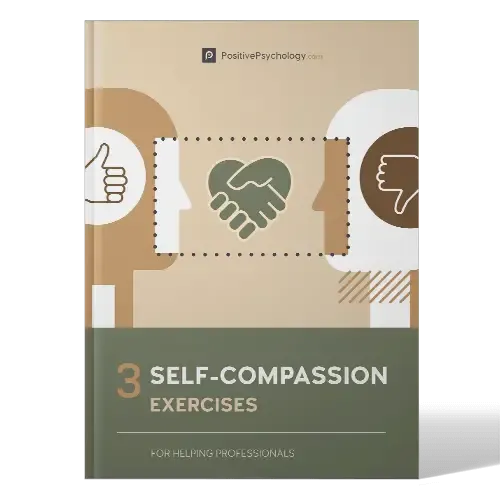

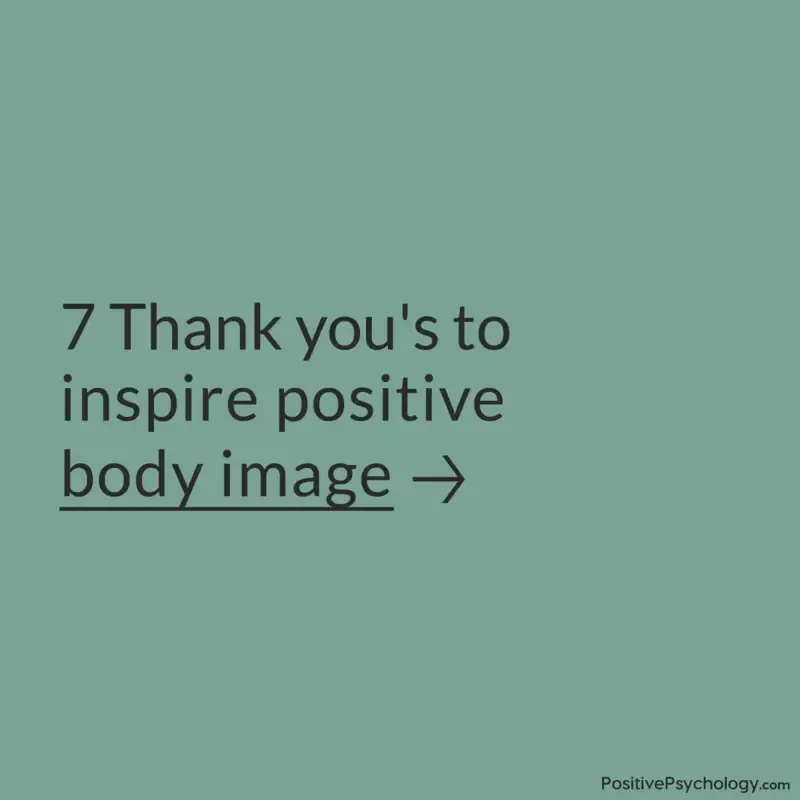


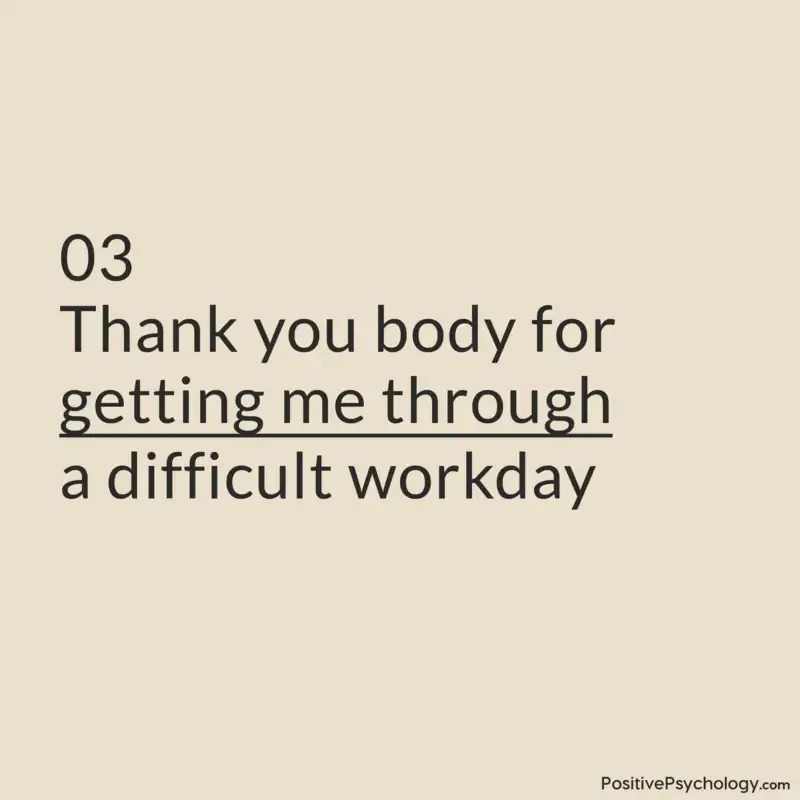
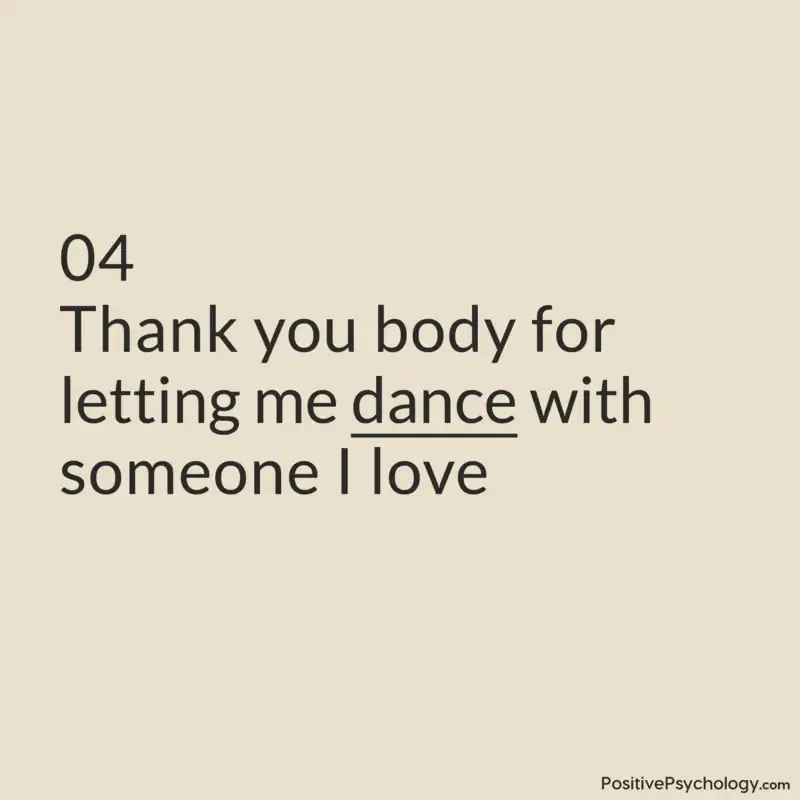
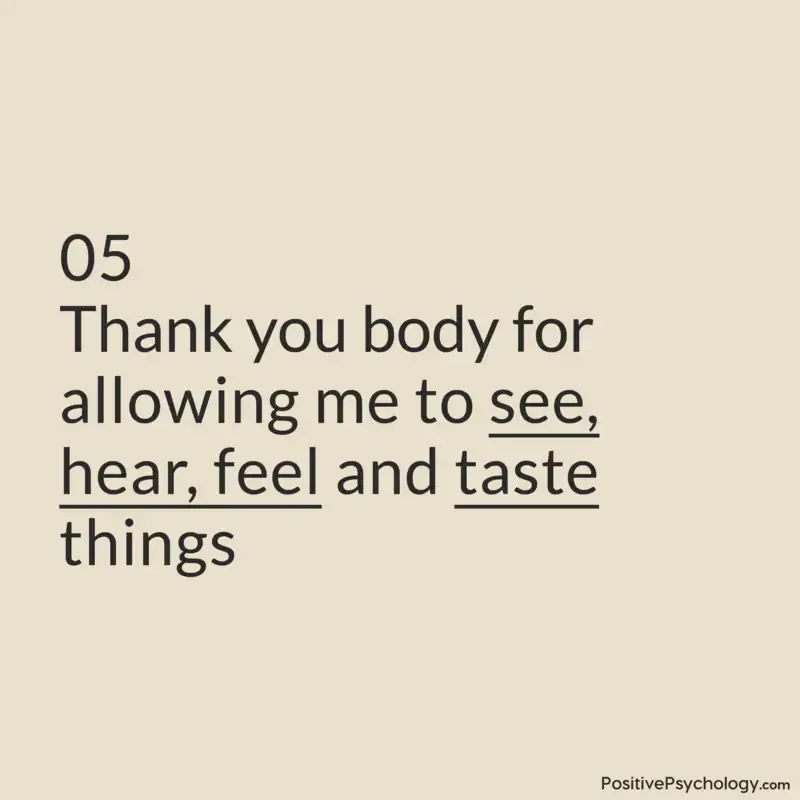






What our readers think
Your book section is very helpful but it needs to be expanded to include the aging process.
This is one of the most diligently researched and laid down, conscientiously crafted, immensely reader-centered, overwhelmingly actionable posts I’ve countered.
It might as well have been a short ebook and I’d have gladly paid for its generously valuable contents. To say anything else would be a gross understatement. Much gratitude to you, Courtney. THANK YOU!
This article is well detailed. I learnt to emphasize my great part rather than undervalue them. Thanks so much.
that is nice i starting to think that i am nice,intelligent,smart…….. not only thinking but of course i am nice, intelligent and smart than any one think. i keep looking forward
Lots of knowledge packed into this article. Thank you for sharing the wisdom.
Great! As always. ?
Thank you… I think I will be coming back to this post/blog often. I will share it over and over again. 🙂
<3
Thank you so much
I need a self Imag scale
For scientific research purposes
Dr. Safi
Thank you, the Article is very useful, I am doing research and training to enhance people self-image especially the students who may fail in secondary school. I am looking to get your support with tests and techniques.
Dr. Ahmed Al Mashani